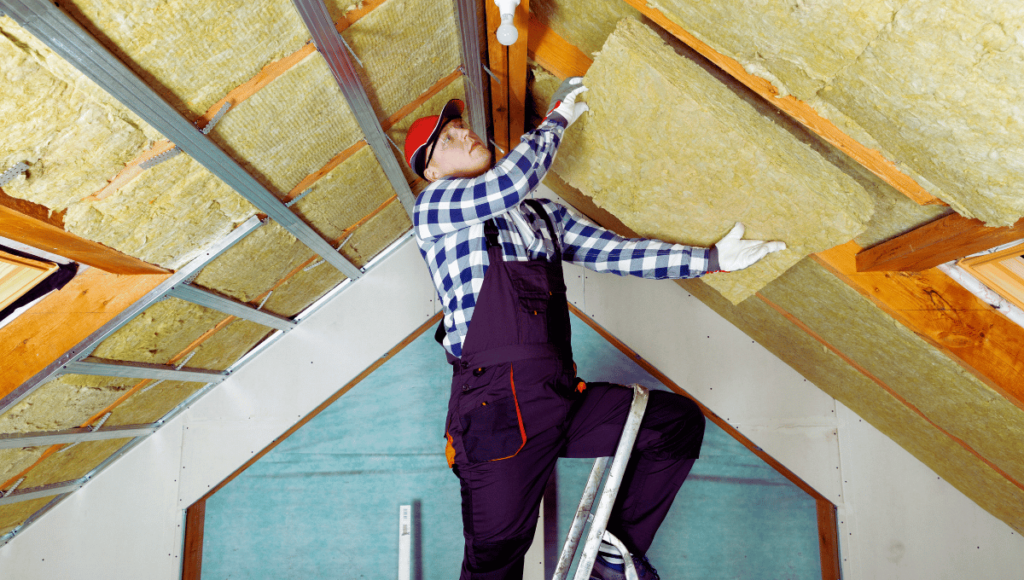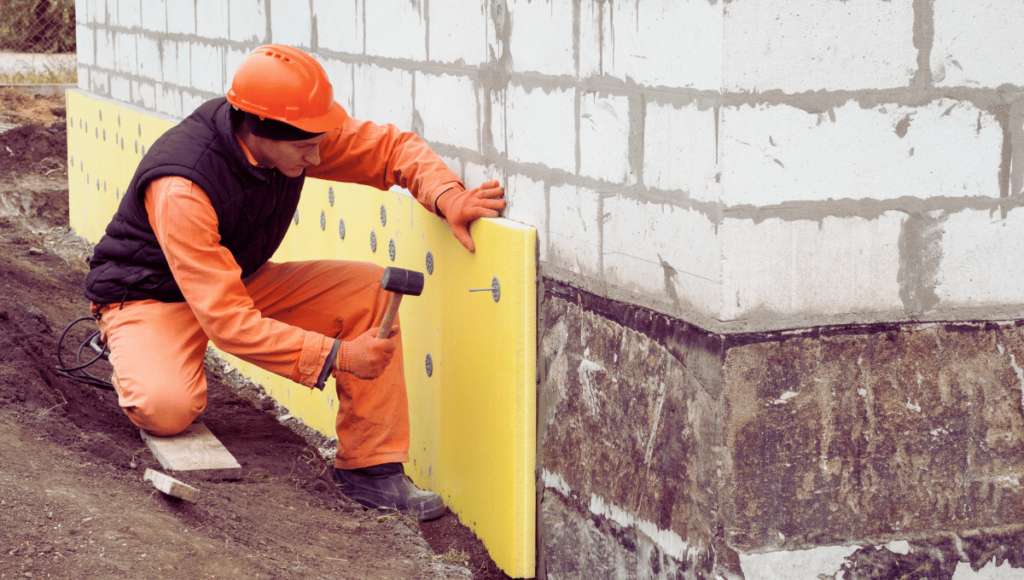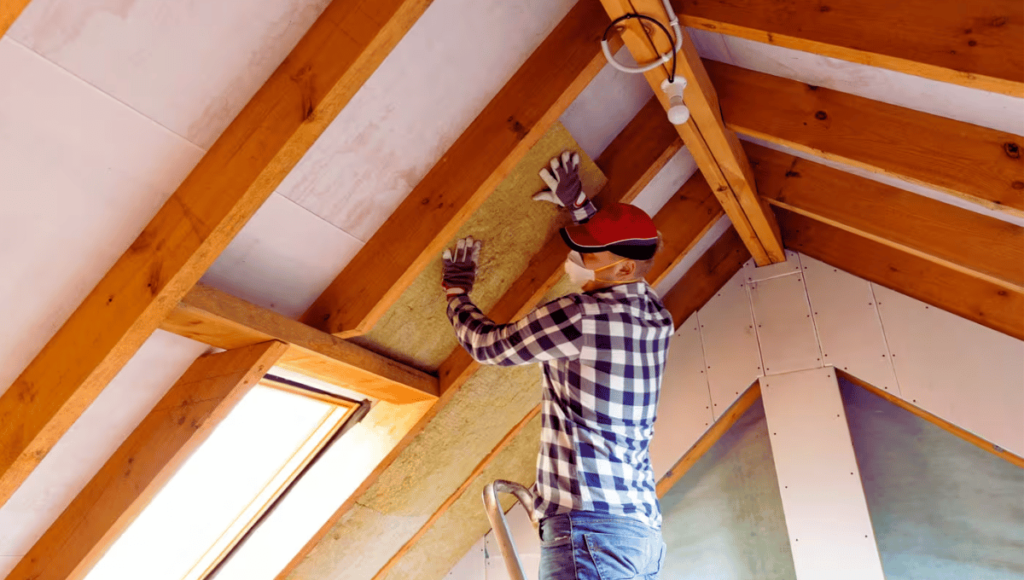Have you ever wondered if spray foam insulation is truly the best option for your Florida attic? While spray foam is often touted for its air-sealing properties and high R-value, there might be another type of insulation that could better suit the unique climate challenges in the Sunshine State. When it comes to finding the most suitable insulation for your attic in Florida, considering factors like heat reflection, ease of installation, and cost-effectiveness could lead you to a surprising choice that enhances your home’s energy efficiency and comfort levels.

What is the best R-value for insulation in Florida?
When considering the best R-value for insulation in Florida, it’s important to prioritize efficiency and energy savings in the hot and humid climate. The Department of Energy recommends an R-value between R-30 and R-60 for attics in Florida. This range helps to effectively reduce heat transfer, keeping your home cooler in the scorching summers and warmer in the milder winters.
In Florida’s climate, where air conditioning is used extensively, having proper insulation with a higher R-value is essential for maintaining a comfortable indoor environment while minimizing energy consumption. Additionally, installing insulation with a higher R-value helps to prevent moisture buildup and potential mold growth in the humid conditions.
When selecting insulation for your attic in Florida, consider factors like the insulation material, thickness, and installation quality to achieve the desired R-value. Fiberglass and cellulose insulation are popular choices due to their effectiveness and affordability.
Proper installation techniques, like ensuring no gaps or compression in the insulation, are vital to maximize the R-value and overall energy efficiency of your home in Florida.
What type of insulation is best for home attic?
To determine the best type of insulation for your home attic in Florida, consider the specific characteristics of insulation materials that align with the recommended R-values for peak energy efficiency and climate control.
Fiberglass insulation is a popular choice due to its affordability, ease of installation, and effectiveness in resisting moisture. It comes in batts or loose-fill forms and can fit snugly between studs, joists, and beams.
Cellulose insulation, made from recycled paper treated for fire resistance, is another excellent option known for its eco-friendliness and ability to fill nooks and crannies effectively.
Spray foam insulation provides a seamless air barrier when professionally applied, ideal for preventing air leakage and moisture intrusion.
Reflective insulation, consisting of foil-faced materials, is best used in hot climates to reflect radiant heat.
Each type of insulation has its advantages, so evaluating your attic’s specific needs and consulting with a professional can help determine the best choice for your Florida home.

What is the best attic insulation for hot weather?
Consider using reflective insulation made of foil-faced materials to effectively combat the heat in your attic during hot weather in Florida. Reflective insulation works by reflecting radiant heat, which is particularly beneficial in hot climates like Florida. By installing reflective insulation in your attic, you can reduce the amount of heat that enters the space, helping to maintain a cooler temperature inside your home.
Foil-faced insulation is lightweight, easy to install, and can be a cost-effective solution for insulating your attic against the heat. It typically consists of layers of aluminum foil laminated to paper or plastic backing, creating a barrier that reflects heat away from your living space. This type of insulation is particularly useful in hot weather conditions as it helps to keep your attic cooler, reducing the strain on your air conditioning system.
When choosing attic insulation for hot weather in Florida, prioritize materials that offer high reflectivity and low emissivity to effectively manage the heat gain in your home.
TYPES OF ATTIC INSULATION
Explore various types of attic insulation to determine the most suitable option for effectively insulating your attic space. Fiberglass insulation is a common choice due to its affordability and relatively easy installation. It comes in batts or rolls and is available in different R-values to meet your insulation needs.
Cellulose insulation, made from recycled paper, is another popular option known for its eco-friendliness and fire resistance. It can be blown or sprayed into the attic, filling gaps and crevices effectively.
Foam insulation, either in the form of spray foam or rigid foam boards, provides excellent thermal resistance and can help seal air leaks effectively. Spray foam expands upon application, creating a tight seal, while rigid foam boards offer a high R-value per inch.
Reflective insulation, typically made of foil, is designed to reflect heat away from your attic. It’s best used in hot climates like Florida to reduce radiant heat transfer.
Consider the climate, your budget, and the existing condition of your attic when selecting the most appropriate insulation type for optimal energy efficiency and comfort.
Why Insulation for the Attic Is a Must-Have in FL Homes
Insulating your attic in Florida is vital for maintaining a comfortable indoor temperature and reducing energy costs. Florida’s climate is characterized by high temperatures and humidity levels, making it essential to have proper insulation to keep your home cool and dry.
Without adequate insulation, your air conditioning system will have to work harder to maintain the desired temperature, leading to increased energy consumption and higher utility bills.
In Florida, where the summers can be scorching and the winters mild, insulation acts as a barrier that helps regulate the temperature inside your home. During hot summer months, insulation in the attic prevents heat from penetrating into your living spaces, keeping them cooler.
In the winter, insulation helps retain the heat generated by your heating system, ensuring that your home stays warm and cozy without excessive energy usage.

Why Should You Care About Insulation for Attics?
Proper attic insulation is vital for maintaining energy efficiency and comfortable indoor temperatures in Florida homes. Ensuring your attic is adequately insulated can have a significant impact on your energy bills, as it helps to regulate the temperature inside your home.
In Florida’s hot and humid climate, effective attic insulation can prevent heat from penetrating your living spaces, reducing the strain on your air conditioning system and ultimately lowering your cooling costs.
Moreover, proper attic insulation also plays an important role in preserving the structural integrity of your home. By preventing moisture buildup and condensation in the attic, insulation helps to deter mold growth and wood rot, which can compromise the stability of your property.
Additionally, a well-insulated attic can enhance the overall comfort of your home by maintaining consistent temperatures throughout the year, regardless of the external weather conditions.
Therefore, investing in quality attic insulation isn’t only a matter of energy efficiency but also a fundamental aspect of home maintenance in Florida.
How Much Attic Insulation Do You Need?
Determining the appropriate amount of attic insulation is essential for optimizing energy efficiency and maintaining comfortable indoor temperatures in your Florida home. The recommended level of insulation for attics in Florida typically falls between R-30 to R-60, depending on the type of insulation material used. The higher the R-value, the better the insulation’s thermal resistance, which helps keep your home cooler in the hot Florida climate.
To calculate how much insulation you need, measure the current level of insulation in your attic. If the existing insulation is below the recommended R-value range, you should consider adding more insulation.
Factors such as the insulation type, climate, and energy costs should also be taken into account when determining the appropriate amount of attic insulation for your Florida home.
Proper insulation not only enhances energy efficiency but also contributes to a more sustainable and comfortable living environment. By ensuring your attic has the right amount of insulation, you can reduce energy costs and improve the overall comfort of your home throughout the year.

Conclusion
To sum up, when it comes to insulating your attic in Florida, reflective insulation with high reflectivity and low emissivity materials is your best bet.
Just like a shield reflecting the sun’s rays, this type of insulation is a symbol of protection against the intense heat of the Sunshine State.
By choosing the right insulation, you can keep your home comfortable, reduce energy costs, and make a smart investment in your property’s energy efficiency.